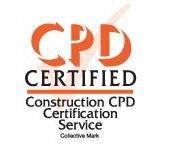A new European standard for automatic doors builds on existing guidelines to ensure that specifiers and installers can minimise any danger to door users. This CPD module is sponsored by GEZE UK

At 1 Finsbury Circus in the City of London, Slimdrive SCR automatic curved sliding doors from GEZE were specified.
How to take this module

To take this module read the technical article below and click through to a multiple-choice questionnaire, once taken you will receive your results and if you successfully pass you will be issued automatically with a certificate to print for your records.
European standard EN 16005 came into force in April 2013. It is designed to safeguard pedestrians from accidents caused by the design and installation of automatic doors. In the introduction to the standard, its scope is described as “[dealing] with all significant hazards, hazardous situations and events relevant to power-operated doorsets when they are used as intended and where conditions of misuse are reasonably foreseeable by the manufacturer”.
The standard is intended to facilitate cross-border trading and is the first formalised pan-European standard for automatic doors. All EU countries must comply with EN 16005, as must any products manufactured outside the EU for use inside it. The standard is also used outside the EU, including countries in the Middle East and Asia.
Clear signage on all types of doors is a key component of the safety system
EN 16005 has been formed from various existing standards, including BS 7036 parts 1-5, which has been recognised as a code of practice since 1996, and the German standard DIN 18650. It also contains 19 normative references (references to publicly available documents that are indispensable for the application of the standard).
Ensuring the safety of door users
Because power-operated doors are essentially machines with moving parts, the safety of users is a key consideration. The obvious hazards are where moving parts move past fixed parts, creating the possibility of trapping fingers or even crushing bodies.
The danger points vary depending on the type of door:
- Automatic sliding doors. The danger points are where the two leaves come together, and at the two closing edges. The use of sensors and pocket screens – essentially a pocket into which the door slides – can help to reduce hazards. The “slot” at the top of the door where the operator is located is not deemed a hazard because of its height above floor level – any injury caused from touching the door here would be classed as an intentional act.
- Automatic swing doors. Here the danger points are where the door closes into the frame and the secondary closing edge where the door pivots. The primary danger points are overcome by a combination of safety sensors and controlling the door opening and closing speeds. Finger entrapment protection will limit the potential danger at the secondary closing edge.
- Automatic folding door. The main danger points are where the leaves come together – the main closing edge – and where the door folds – the secondary closing edge. Again, the use of presence sensors and limiting the opening and closing speeds can reduce the risk of injury. The profile design on the secondary closing edge can help to prevent finger entrapment.
- Revolving doors. A typical revolving door has several potential danger points due to the number of closing edges. On moving leaves, foot or heel switches are needed so that if the door catches up with the user it will stop. On the top of the moving leaf there should be a safety sensor. And on the leading mullion a safety strip is required.
Clear signage on all types of doors is a key component of the safety system. It is the commissioning engineer’s responsibility to attach all relevant signage initially, and then the building owner or occupier is responsible for maintaining it. Signage should be affixed to the powered door system at a height of between 1,300mm and 1,600mm.
Appropriate signage includes:
- No entry sign
- Keep clear sign
- Emergency break-out sign
- Automatic door sign
- Disabled person sign
- Direction of travel sign
Existing standards
There are already a number of standards and codes of practice to be taken into consideration when designing and installing automatic doors. These include:
- BS 7036. Although the British standard is being integrated into the EN standard, its signage and manifestation requirements will remain. This is because it includes UK-specific guidance, whereas the EN standard is more generic.
- The Machinery Directive 2006/42/EC. This outlines the legal requirements and obligations for safeguarding users of machinery. It defines only the essential health and safety requirements. As an automatic door is a machine, it comes under the umbrella of the Machinery Directive. EN 16005 is derived from this directive.
- The Health and Safety Executive’s Workplace Health, Safety and Welfare Approved Code of Practice. This is necessary as the HSE investigates all accidents involving power-operated doors.
- The Workplace (Health, Safety and Welfare) Regulations 1992. This implemented an EU directive on minimum health and safety requirements for nearly all workplaces.
- The Provision and Use of Work Equipment Regulations 1998. These lay down requirements for employers regarding the safety and use of all work equipment including machinery.
Impact on specifiers
Architects, like developers, manufacturers, installers, service companies and building owners, are potentially liable if there is an accident involving a power-operated door.
The EN standard is the primary document that is considered to show due diligence in court. Architects should note that all existing work in design must conform to EN 16005.

The Automatic Door Suppliers Association (ADSA) has prepared a guidance document for its members outlining the additional information covered in EN 16005. Architects can obtain advice from any of the association’s members on the changes. ADSA will also be producing guidance on completing the risk assessment requirements of EN 16005.
Specifiers must also be careful to select suppliers who can provide qualified staff, to ensure that the installer is aware of its responsibilities and the correct settings. Approved installers will need to requalify to EN 16005. Until the new test has been put together by ADSA — it is due at the end of 2013 — the current accreditation for installers is still valid.
What’s different in the new standard

In general, EN 16005 is deemed to be more onerous than the existing national standards. Key aspects include:
- Logbooks. Each manufacturer has its own logbook, with information such as the unique identification number, the door location reference, contact details of the installer, date of installation and identification of any power-operated drive unit and protective devices. The new standard emphasises the importance of logbooks as the primary record of manufacture and installation — similar to a service book for a car. In the event of an accident the logbook would be called upon in a court of law. It needs to be kept by the building owner or facilities manager and completed by the service technician. It is recommended that it is kept near to the actual door.
- Activation distances. The minimum activation distance for automatic swing or sliding doors on escape routes has been increased from 1,400mm to 1,500mm as people move faster in an emergency, so doors must open sooner. In non-escape situations, the activation distance has been reduced from 1,400mm to 1,000mm to allow for cross-traffic — in other words, to ensure doors don’t open every time someone walks past.
- Protective leaves. This is the term used in the European standard for pocket screens. The safety distance between the fixed and moving parts, which is set to help limit the risk of finger entrapment at the secondary closing edge, has increased from ≤6mm in BS 7036 to ≤ 8mm in EN 16005. Danger points for protective leaves extend to a height of 2.5m. Covers and guards should only be removable with a tool.
- Safety distances. Head entrapment is a potential danger where automatic sliding doors open up against an adjacent wall or structure. To reduce this risk, the distances between the final stopping point of the door and a fixed structure should be greater than 200mm. If there is a risk of body entrapment, then the safety distance should be greater than 500mm.
- Pedestrian barriers. As in the previous standard, these should have a minimum height of 900mm and should be designed so that children cannot climb over them or trap fingers or heads.
- Revolving doors. Revolving doors up to and including 3m in height require additional sensors on the moving door leaves at both heel level and the leading edge and at least one emergency stop. Speed and power limitations are set at a more onerous level, which means that doors are slower.

BD’s free continuing professional development distance learning programme is open to everyone who wants to develop and improve their professional knowledge.
These modules can contribute to your annual CPD activity and help you maintain membership of professional institutions and bodies.
This module will contribute 1 hour towards your CPD obligations. If successfully completed, certificates will be distributed two weeks after the module closes.
Duration: 1 hour
Module 16 Deadline: September 6 2013
Postscript
Privacy policy
Information you supply to UBM Information Ltd may be used for publication and also to provide you with information about our products or services in the form of direct marketing by email, telephone, fax or post. Information may also be made available to third parties. “UBM Information Ltd” may send updates about BD CPD and other relevant UBM products and services. By providing your email address you consent to being contacted by email by “UBM Information Ltd” or other third parties. If at any time you no longer wish to receive anything from UBM Information Ltd or to have your data made available to third parties, please write to the Data Protection Coordinator, UBM Information Ltd, FREEPOST LON 15637, Tonbridge, TN9 1BR, Freephone 0800 279 0357 or email ubmidpa@ubm.com.

















3 Readers' comments